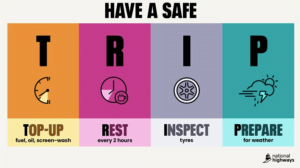Air pollution speed limits that force motorists to drive at 60mph should end, campaigners have said, after it emerged they have lasted twice as long as originally proposed without producing evidence they work.
Drivers on stretches of the M1, the M6, the M5 and the M602 have been limited to a top speed of 60mph in a bid to ascertain if driving more slowly helps reduce emissions.
But the restrictions, which were only supposed to last between 12 and 15 months, have now been running for more than two years, despite no evidence to show they are effective, reports the Daily Telegraph.
There are even questions over whether the increased congestion caused by the new speed limit may have actually increased pollution.
Motoring groups and a former roads minister are among those now calling on National Highways to come clean with the data or end the trials.
The lowering of the speed limit was introduced based on modelling that claimed it would significantly reduce the annual mean nitrous dioxide concentrations in the affected zones.
It was suggested this would help the areas around the trials near Rotherham in South Yorkshire; Witton in Birmingham; Eccles in Greater Manchester and Oldbury in the West Midlands meet pollution limits one to two years earlier than expected.
But The Telegraph understands the modelling did not take account of particle pollution produced by braking. The policy also penalises electric vehicles which produce no exhaust emissions and newer, less polluting cars.
More than two years since the trials started no data has been published to support claims it improves air quality. But the restrictions have caused huge frustration for drivers who have endured years of roadworks as part of the Smart Motorway upgrade.
Sir John Hayes, a former roads minister, told The Telegraph that National Highways should show that the trial was working or reinstate the national speed limit.
He said: “Air pollution is a real concern but the relationship between speed or traffic and pollution is complex. When you have congested traffic, emissions grow.
“It’s hard to legitimise the argument that the difference between 60 and 70 is significant in terms of emissions, but I’d be happy to look at the facts. They’ve got to either come up with the facts or concede that the scheme was not designed for its purpose.”
Iain Stewart, the Conservative chair of the Transport Select Committee, said he would grill National Highways on the matter as part of a new inquiry by the committee into the road network.
“I’ve got a general concern about having things that evolve by a creeping change without it being evidence based,” he said.
“I would certainly want to quiz them on what the data that they’ve established thus far has shown and whether that gives a justification for these speed restrictions to be made permanent.
“I wouldn’t be in favour of doing that without there being a strong evidence base.”
Claire Armstrong, from the campaign group Safe Speed, said the scheme may have even unwittingly made pollution worse.
She said: “If you slow the traffic you risk creating congestion and the more congestion the more pollution you are going to get so I would be highly suspicious of a 60mph zone on a motorway doing anything other than causing frustration and not reducing the pollution.”
Hugh Bladon, from the Alliance of British Drivers, also called for an end to the trials.
He said: “There is an obsession in this country with lowering the speed limit. They are trying to find any excuse they can to reduce the speed limit which is already too low at 70mph. Lowering the speed limit is seen as a panacea for everything but it is not.”
The AA has argued that the most polluting vehicles, such as large lorries, were already limited to 60mph anyway, while police forces often allowed 10 per cent plus 2mph leeway to the speed limit, meaning drivers could still be driving near 70mph during the trials.
AA spokesman Luke Bosdet, said: “Essentially, this issue boils down to environmental concerns versus the efficiency of the road network. Many drivers feel that it is slanted too much towards the former.
“The key question is whether the lower speed limit needs to be in operation all day, or whether they could be brought into force when environmental conditions require it.
“The AA would argue that, if variable speed limits can operate on the M25 depending on conditions, the same can happen on other motorways, where needed.
“Otherwise, given the parts of the country where these speed limits operate, you end up with a ‘levelling-up, slowing down’ irony.”
National Highways said that the policy was based on real-world driving data and vehicle emission testing. It originally promised to publish monitoring for the first 12 months of the restrictions on its website but has not done so.
It told The Telegraph the first results would be available in the spring – nearly two and a half years after the first schemes were introduced, and said the restrictions would be removed if they do not have the desired impact.
A spokesman for National Highways: “As part of this process we are taking a series of actions such as lowering speed limits on some roads. Robust findings informed our decision and these 60mph limits will remain in place until the air quality has met legal limits and will continue to do so when the measure is removed.
“Given the complexity and amount of data needed, this requires appropriate time to complete all the stages of the analysis process.
“National Highways is looking to produce initial reports on the performance of the real world 60mph speed limits in spring 2023.”





















